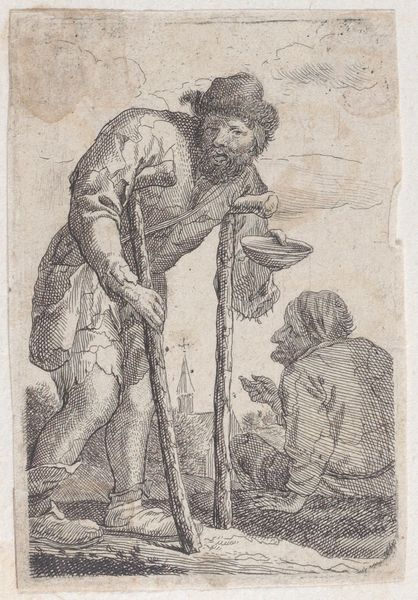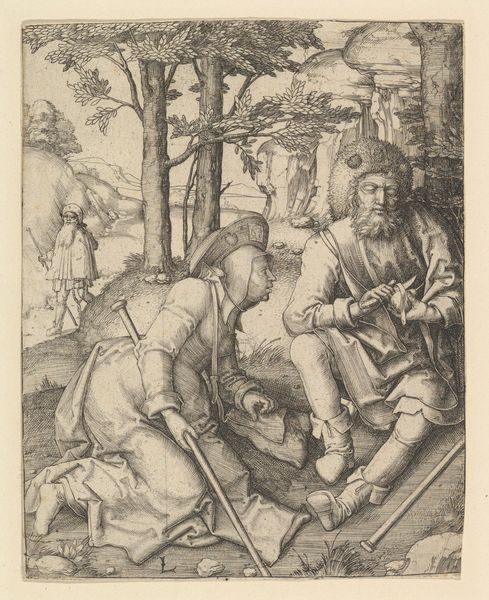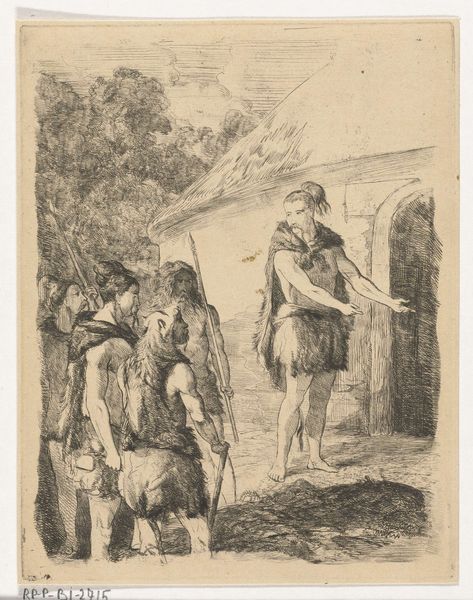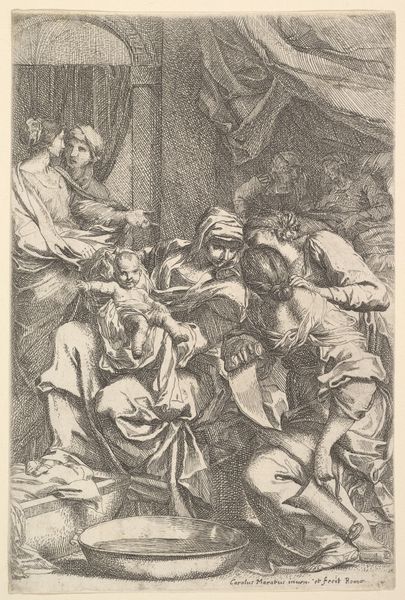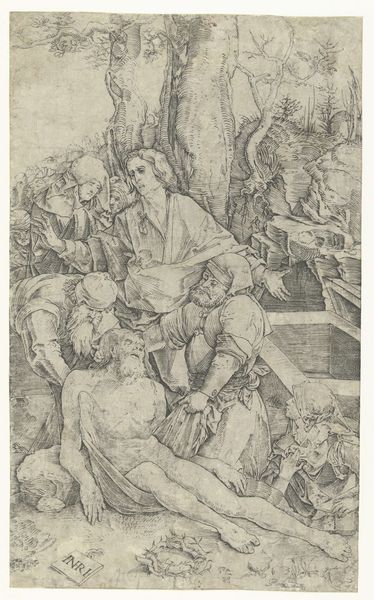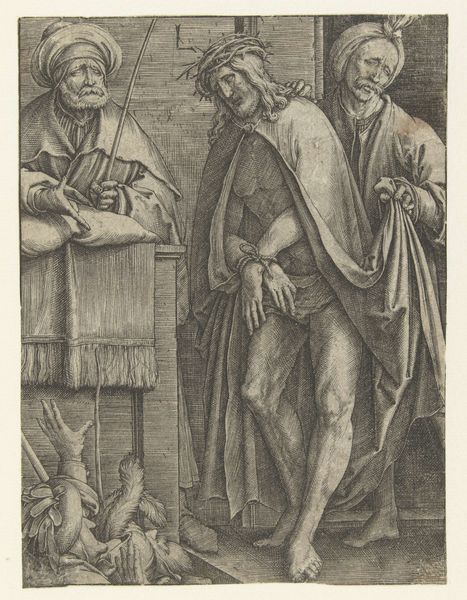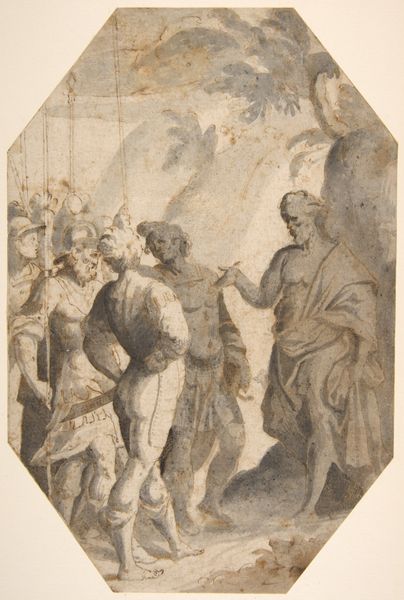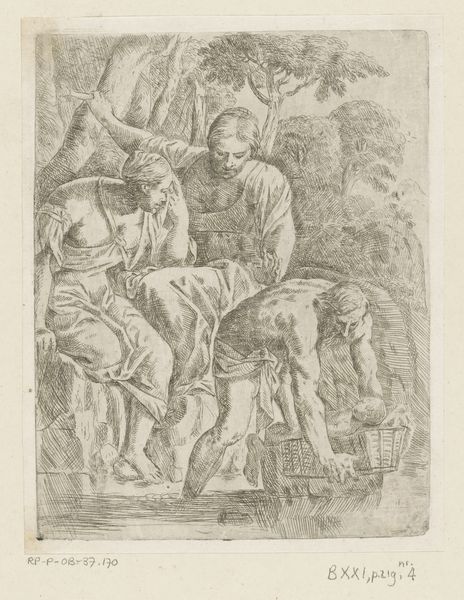
Dimensions: height 173 mm, width 133 mm
Copyright: Rijks Museum: Open Domain
Editor: This engraving, "The Temptation of Christ," was created in 1518 by Lucas van Leyden. The sharp lines give it such a stark feeling, almost like a stage play. What strikes you most about this piece? Curator: The interesting question to me is, why this scene, and why rendered like this? We have this intimate moment rendered with detailed observation. Engravings like this circulated widely and were not just aesthetic objects. They taught viewers how to interpret religious narratives. Van Leyden's work highlights how early printmaking fostered a more personal, visually driven religious experience. Note the composition – how does the positioning of Christ versus the Tempter reinforce their roles and the ultimate moral lesson? Editor: That's fascinating – a personal religious experience through a printed image. The contrast between the two figures really does become more apparent when you look at it that way. Do you think the landscape setting affects how people received the message? Curator: Absolutely. Landscape in the Northern Renaissance wasn’t just background; it carried meaning. Consider how the rocky terrain isolates Christ, amplifying his spiritual trial. But look further – there's also a distant town. It invites speculation. What kind of worldly temptations might that town represent, in contrast to the spiritual rigor demanded of Christ in the wilderness? It makes you think about what societal pressures or power structures were at play. Editor: It really is multilayered! I never would have considered that the landscape itself could be making a commentary. Curator: Exactly. Van Leyden cleverly uses both figuration and setting to convey complex religious ideas to a wider audience. I think we can see how deeply the printing press altered people's relationship with religion. Editor: It is a new perspective that encourages to analyze images beyond the surface, it definitely makes me more sensitive to the political, cultural, and social narratives within art. Curator: Precisely! Art reflects its socio-political environment, which helps us engage in insightful discussions of art.
Comments
No comments
Be the first to comment and join the conversation on the ultimate creative platform.
